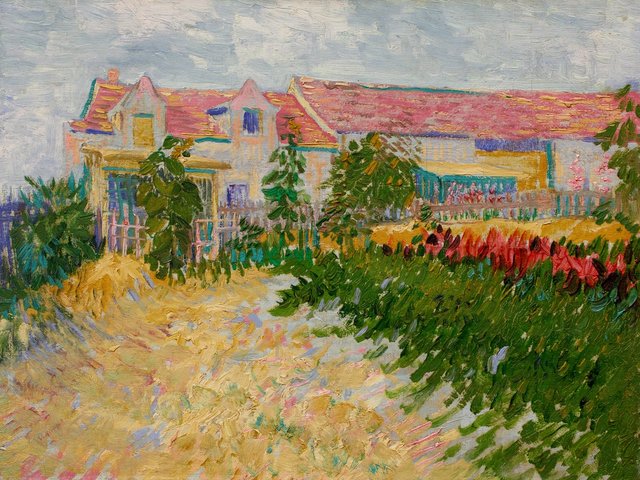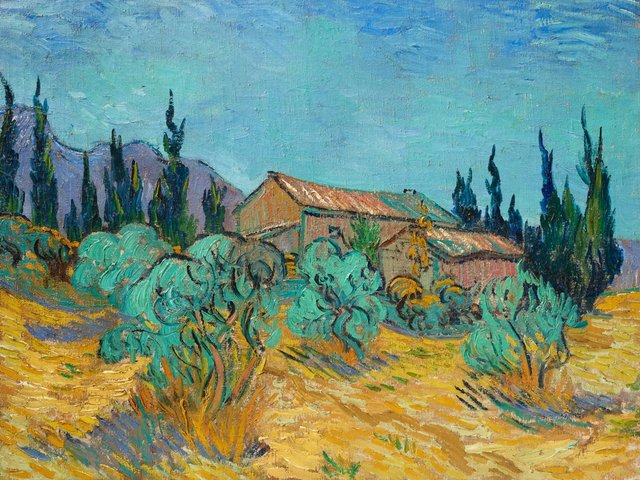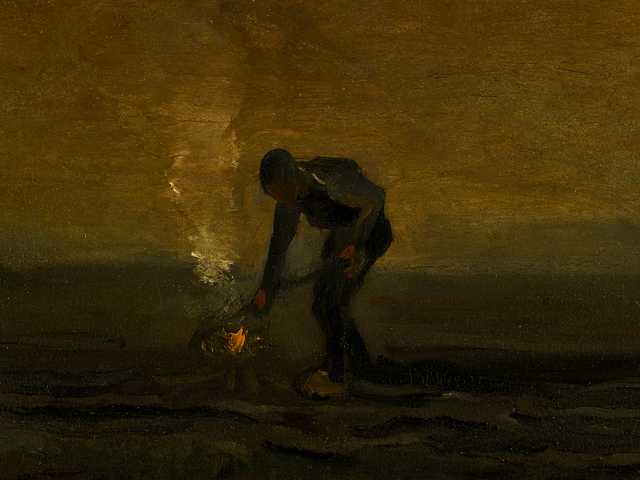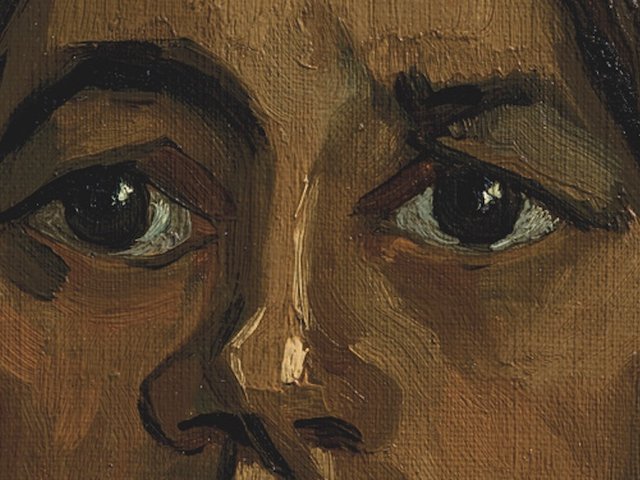Vincent van Gogh's vibrant watercolour of wheatstacks in a Provençal farmyard is to be auctioned at Christie’s, New York on 11 November. The painting, which was last exhibited in 1905, has never been reproduced in colour. It is estimated to fetch $20m-$30m.
Wheatstacks (Meules de Blé) has come up for sale after complex negotiations, facilitated by Christie’s, involving three parties. These are the descendants of two Jewish families who owned the Van Gogh in the 1933-45 Nazi era and the current seller, the heirs of Edwin Cox (1921-2020), a Texan oilman. The Cox family is also selling two other Van Goghs, which together should bring in more than $70m. All three date from 1888-90, the artist’s most sought-after period in France.
The watercolour of wheatstacks was painted at the beginning of June 1888, when Van Gogh was working in Arles and was at the height of his powers. It represents a study which led a few days later to an oil painting of the same subject, now at the Kröller-Müller Museum.

Van Gogh’s Wheatstacks in Provence, oil (June 1888) Courtesy of the Kröller-Müller Museum, Otterlo
A week or so later Vincent sent the watercolour to his brother Theo. In 1905 his widow Jo Bonger lent it to the major Van Gogh retrospective held in Amsterdam. Two years later she sold the work to the Parisian artist and collector Gustave Fayet.
In 1913 Wheatstacks was bought by Max Meirowsky (1866-1949), a Berlin-based industrialist. He had a fine collection of Impressionism and Post-Impressionism, including Van Gogh’s Portrait of Camille Roulin (1888) (now in the Museo de Arte, São Paulo).
After the Nazis seized power Meirowsky faced persecution as a Jew and in 1938 he fled to Amsterdam. He then entrusted Wheatstacks to Paul Graupe, a German Jewish art dealer then working in Paris.
Soon afterwards the watercolour was bought by Paris-based Alexandrine de Rothschild (1884-1965), a member of the wealthy Jewish family of bankers. She too was an admirer of Van Gogh, owning House with Sunflowers (1887) (now in another private collection). De Rothschild fled to Switzerland at the outbreak of the Second World War.
Wheatstacks remained in Paris after the German occupation of the city in June 1940. In 1941 the watercolour was seized and held at the Jeu de Paume, where looted art was assembled. A few weeks later it was sent to Austria (then annexed into Germany), to Schloss Kogl in St Georgen im Attergau.
After the war De Rothschild tried to recover Wheatstacks but failed. The watercolour’s immediate post-war history is unclear, but in 1978 it was with the New York branch of the Wildenstein gallery, owned by a Parisian-based Jewish family. Wildenstein sold the Van Gogh to Cox the following year.
Cox hung the watercolour in the drawing room of his Dallas mansion. At this point his ownership of the Van Gogh remained a secret known only to his family and close friends.
After Cox’s death last year the sale of his fabulous art collection was arranged with Christie’s and the question of the status of Wheatstacks became urgent, since it would have been impossible to sell it if there were Nazi-era claims.
Meirowsky’s heir, acting through the Berlin lawyers Von Trott zu Solz Lammek, claimed that the Van Gogh had been subject to a “forced sale” in 1938. The heirs of De Rothschild argued that the watercolour had been looted by the Nazi occupiers three years later. The parties subsequently agreed to a settlement.
The Christie’s catalogue entry states: “The present work is being offered for sale pursuant to a settlement agreement between the current owner, the heir of Max Meirowsky and heirs of Alexandrine de Rothschild. The settlement agreement resolves the dispute over ownership of the work and title will pass to the successful bidder.”
Although the terms remain confidential, presumably the sale proceeds will be split in an agreed proportion and/or with fixed sums. With the Christie’s estimate of $20-$30m, it is very likely to reach a record price for a Van Gogh work on paper.
Until now the highest price for a Van Gogh watercolour was the £8.8m paid at Sotheby’s in 1997 for The Harvest. This was also painted in June 1888, within a day or two of Wheatstacks.
Along with Wheatstacks, Cox’s two other Van Goghs will be coming up at Christie’s. Wooden Cabins among the Olive Trees and Cypresses (Cabanes de bois parmi les oliviers et cyprès) is a quintessential Provençal landscape, painted in October 1889 just outside the asylum where the artist was then living. Although no estimate has been announced, Christie’s believes this fine picture should fetch around $40m.
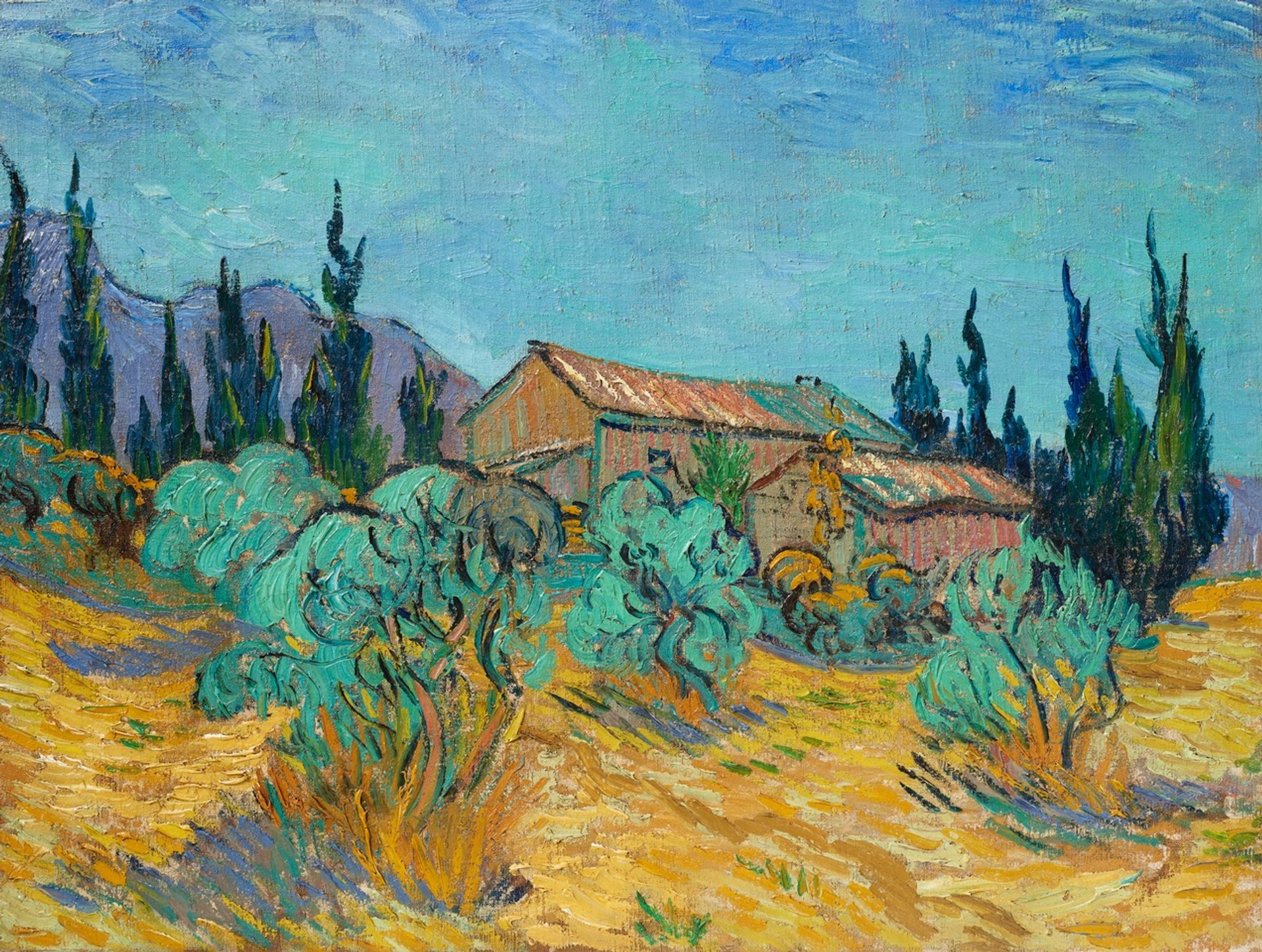
Van Gogh’s Wooden Cabins among the Olive Trees and Cypresses (Cabanes de bois parmi les oliviers et cyprès) (October 1889) © Christie’s Images Ltd 2021
The third Van Gogh is Young Man with a Cornflower (Jeune Homme au Bleuet), painted in Auvers-sur-Oise in June 1890, the month before the artist’s death. Christie’s describes the unidentified sitter as “a child of the fields, a mischievous ragamuffin”. Although the auction house entitles it as a “young man”, in the early 20th century it was described as a portrait of a girl.
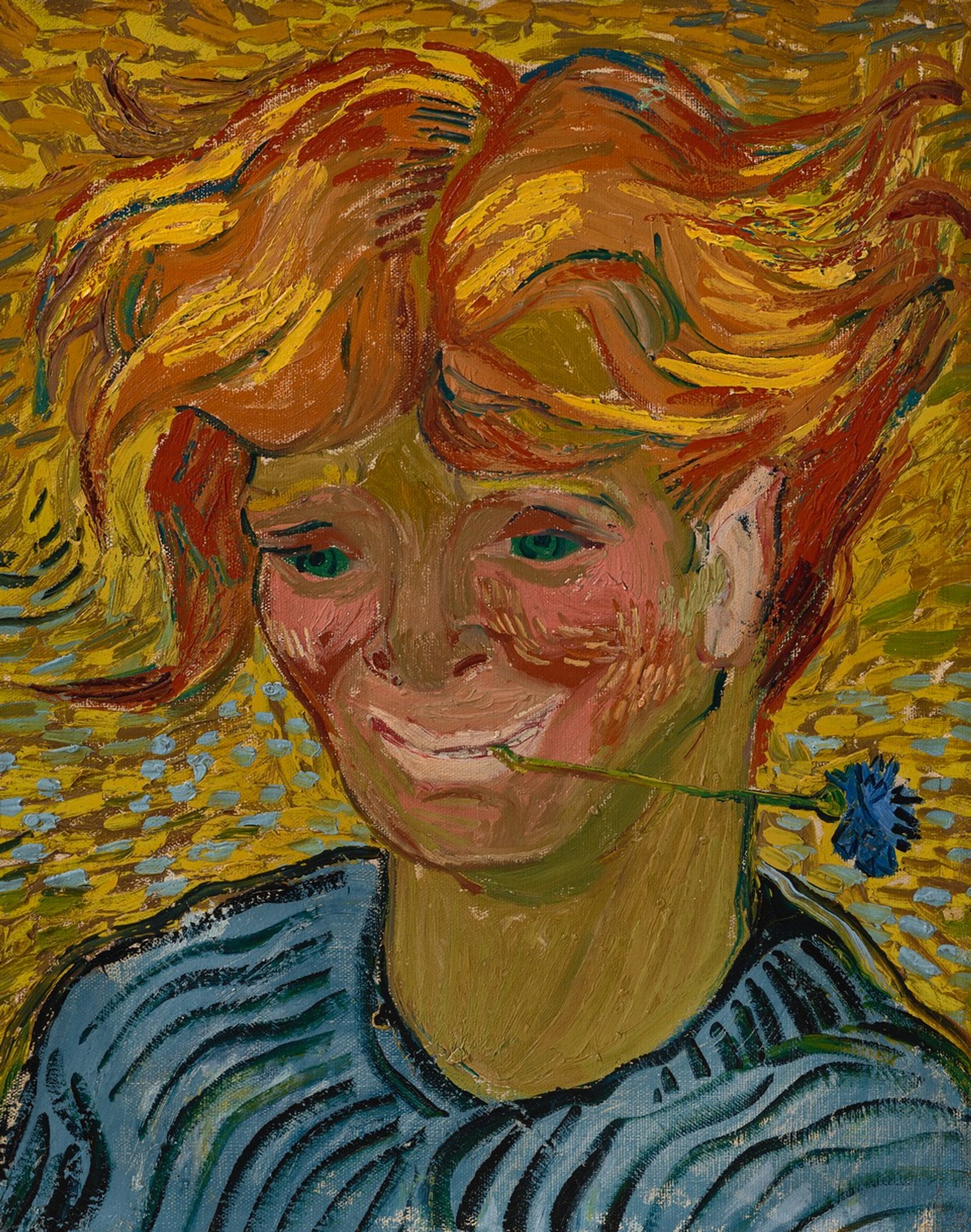
Van Gogh’s Young Man with a Cornflower(Jeune Homme au Bleuet) (June 1890) © Christie’s Images Ltd 2021
Young Man with a Cornflower is a curious portrait of a tousled hair youngster with a reddened face and a cornflower in their mouth. Although the brushwork is typical of Van Gogh’s late work, it is by no means a conventional portrait—and hence the relatively modest $5m-$7m estimate.
Despite the fact that Young Man with a Cornflower was done in the same month as the record-breaking Portrait of Dr Gachet, they are certainly not in the same league. Portrait of Dr Gachet sold for $82.5m in 1990, still the highest price fetched for a Van Gogh. It has since disappeared into a mysterious private collection.
Interestingly, Young Man with a Cornflower was exhibited in the groundbreaking Manet and the Post-Impressionists exhibition in London in 1910. It was presumably then well regarded by the curator, Roger Fry, and the lender, Jo Bonger.
The British public certainly disagreed. Critics described the painting as “a study in advanced lunacy” (Tatler, 23 November 1910) and “the visualised ravings of an adult maniac” (Morning Post, 7 November 1910). The Sketch ran a reproduction of the portrait along with works in the show, under the headline “Giving Amusement to all London: Paintings by Post-Impressionists”. Now estimated at $5m-$7m, the artist should have the last laugh.
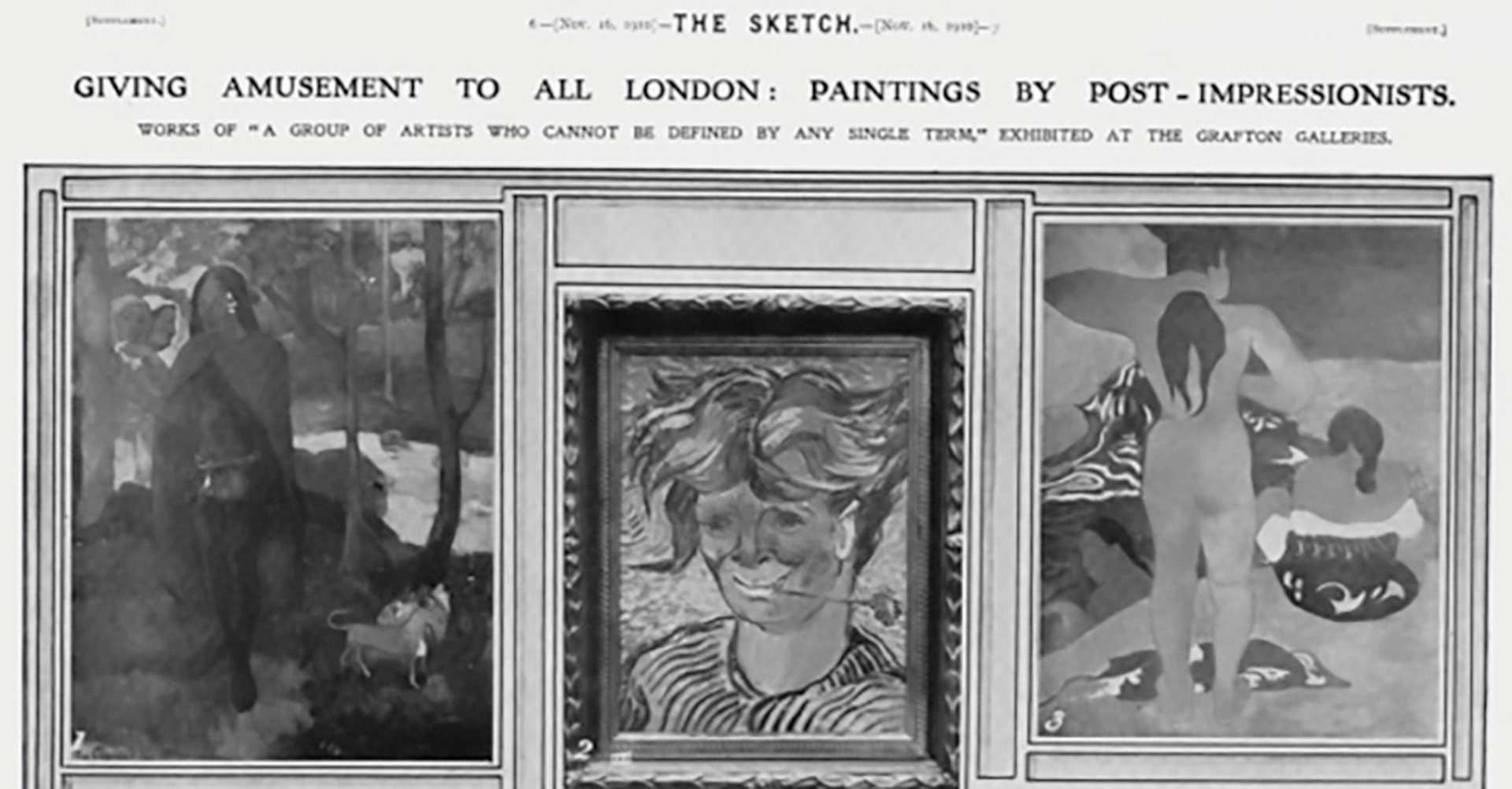
“Giving Amusement to all London: Paintings by Post-Impressionists”, The Sketch, 16 November 1910
The three Cox Van Goghs will be on display at Christie’s, London on 17-21 October.
Other Van Gogh news
• Still life: Vase with Gladioli (Nature Morte: Vase aux Glaïeuls) (August-September 1886) sold for HK$71m ($9.1m) at Sotheby's, Hong Kong on 9 October. This was just below the low estimate. The buyer was an Asian collector.





